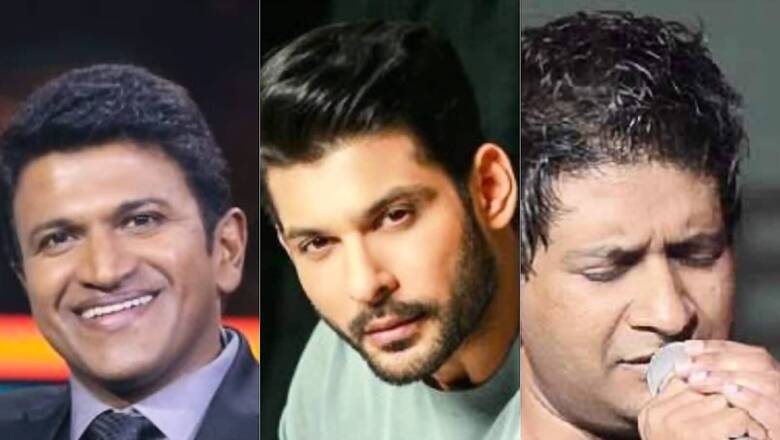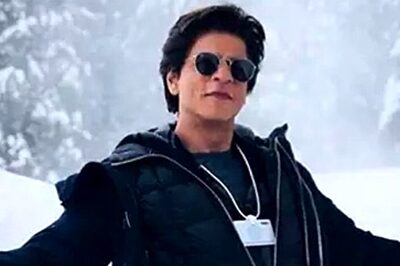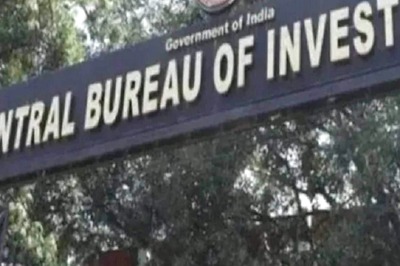
views
Amit Kumar, a journalist with an international news agency, was only 29 years old when he survived a heart attack.
Like many others, Kumar confused the chest pain with acidity due to a heavy supper. Popping a few antacids did not offer him much relief. In fact, his general physician, in the first go, did not assess him for a heart ailment.
But, he found an abnormality in his electrocardiogram (ECG) and advised him to straightaway go to the tertiary hospital.
“He didn’t tell me anything, presuming that I would panic. He only told me to keep all my plans on hold,” Kumar said over a phone call, recalling how this came as a shock to him five years ago.
When he reached the hospital in moderate but continuous chest pain, he was informed that he had a heart attack. “It was literally a body blow. I could barely believe what I was told. I was too young to have a heart attack, I thought.”
Kumar’s body mass index (BMI) was well within the range and he had no history of diabetes or hypertension or other illnesses.
“I was smoking and eating out in the hostels. But I was young and generally, at that age, the given understanding is you are fit for everything.” He added: “I confess, life has changed and lifestyle too.”
The conversation over increasing incidence of heart ailments and cardiac arrests gained momentum after the death of popular singer KK. Previously, several other celebrities, including Kannada superstar Puneeth Rajkumar, TV actor Sidharth Shukla and director Raj Kaushal, have lost their lives due to cardiac arrests at a young age.
However, the trend is not limited to young celebrities. In fact, common people like Kumar are struggling with the same.
Medical on-ground experience
Sample this: At KMC Hospital, Mangalore, 150-175 angioplasties are performed every month. Angioplasty is a procedure where a small metal mesh tube is inserted in the heart’s artery to expand the insides (of the artery) and ease the blood flow (in the heart).
In this, more than 55-60 patients fall under the primary angioplasty category, which means these are patients who suffered a heart attack.
“This alone shows the burgeoning increase in coronary artery disease (CAD) occurrence in our patients,” Dr P Kamath, interventional cardiologist at KMC Hospital. “In these 60 patients, more than 40-45% are less than 40 age group, again exemplifying the enormity of the problem among youth.”
According to Dr Deepak Krishnamurthy, senior interventional cardiologist, Sakra World Hospital, Bengaluru, a large chunk of his patients are below 50 years of age, which can be technically termed as “young patients” for having heart diseases.
“Of my total patients, 30-40% are below 50 years. At least 25-30% of them are below 40 years,” he said, while adding that the youngest heart patient he has treated with heart attack was a 19-year-old obese boy with a history of diabetes.
“The next was a 23-year-old girl with a history of smoking. She was working in the IT industry and was diagnosed with triple vessel disease. A major by-pass surgery was performed on her.”
And the list goes on…
What’s wrong?
According to a study, coronary heart disease deaths in the Indian subcontinent have doubled since 1990, and are predicted to rise a further 50% by 2030. In fact, around 2.63 million Indians died from cardiovascular disease (CVD) in 2017, which was the leading cause of death in the country as well.
There are many factors that contribute towards the making of a heart disease.
It includes type-2 diabetes, insulin resistance and related metabolic disturbances, which are more prevalent amongst Indian Asians than Europeans and have been proposed as major determinants of higher CHD risk among Indian Asians.
A new US study by researchers from the Massachusetts General Hospital has found that Indians and other South Asians are twice as likely to develop heart diseases compared to those of European ancestry.
Researchers compared the rates of developing cardiovascular disease, including a heart attack, stroke among people of South Asian ancestry to those of European ancestry.
They found that 6.8% of participants with South Asian ancestry had a cardiovascular disease event, compared to 4.4% of those with European ancestry.
In fact, other statistics too clearly reveal the picture that younger Indians are vulnerable to heart diseases.
As per the World Health Organization (WHO), India accounts for one-fifth of all non-communicable diseases (NCD)-related deaths worldwide and most of these deaths are from the younger population.
The Global Burden of Disease study found that the cardiovascular disease death rate in India is 272 per 1,00,000, which is significantly higher than the global average of 235.
India may soon become heart-attack capital of world
Doctors agree with the findings of the studies. “Indians genetically are more susceptible to having heart disease in younger age groups when compared to other countries, globally,” Krishnamurthy said.
“South Asian people are likely to develop heart-ailments at least 10 years before their counterparts of the same age in other countries. While India is already diabetic capital of the world, it may soon become the heart attack capital soon,” he predicts.
Heart disease is more common in men before the age of 40, Dr Kamath pointed. The reasons can be multifactorial, including smoking, stress and genes. “However, after 40, this gap narrows and incidence is equal in post-menopausal women and men after the age of 50.”
According to Dr Sunil Dwivedi, consultant, cardiologist at Manipal Hospitals, due to lack of awareness about regular health checks and physical activity, people develop silent heart trouble in their middle age. “Then either they suddenly start doing heavy physical activity or sports to reduce weight and fitness or go for stressful sessions or programmes.”
During such periods, the stress hormones can cause sudden rupture of cholesterol plaque in the heart blood supply. Combined with the increased blood-clotting tendency, a sudden clot in blood supply leads to a heart attack.
Awareness about early diagnosis
Early diagnosis and timely medical intervention could help manage the condition better.
A Lancet study published in 2018 showed that the proportion of those dying of coronary heart disease with a diagnosis of pre-existing heart disease rose between 2001 and 2013. However, at least half of these individuals were taking no regular medication.
It found that it could be the combination of poverty, ignorance and lack of access to sound medical advice which is driving heart disease-related deaths in the country.
“We need to educate the public about early signs of heart disease and also emphasis should be laid on prevention,” Kamath said, who runs an NGO called Cardiology at Doorsteps (CAD) for the last five years where they have given ECG machines to more than 700 PHCs across Karnataka.
Dr Anand Kumar Pandey, director, cardiology, at New-Delhi based Dharamshila Narayana Superspeciality Hospital echoed similar points.
He emphasised that awareness should be created around symptoms of heart attack or cardiac arrest so that lives can be prevented in a timely manner.
For instance: Excessive sweating can be a sign of heart attack and people must become alert. “At the time of a heart attack, your heart slows down and it becomes difficult to circulate blood through the body. It actually happens when the coronary artery gets blocked and this breaks down the supply of oxygen-rich blood to your heart muscle. Therefore, the body uses extra energy to pump blood and cool itself down, which makes you sweat.”
Sweating more than usual days, especially when you aren’t doing exercise or being inactive, can be an early warning sign of heart diseases.
Missing concept of heart health in India
In India, the concept of a healthy heart is missing. According to health experts, very few people in their youth or middle age are regular with health check-ups despite the genetic makeup of being more prone to heart diseases.
Also, the Indian diet lacks nutrients such as vitamin D and essential fatty acids, including Omega 3 and Omega 6, which are essential to maintain a healthy heart and reduce triglycerides and cholesterol levels. On the contrary, the consumption of sugar and salt is high, which is not recommended above a certain threshold.
Mere exercise and keeping fit alone is not sufficient to have a healthy heart, experts said. Increasing stress due to career, professional lives and lifestyle also plays a key role.
“We have seen that the most important risk factor in these young patients is stress,” Dr Avinash Singh, cardiologist at Medanta in Lucknow, said. “De-stressing our brain and body is one of the important tools along with other lifestyle interventions for preventing such life-threatening events. We should learn to keep our body out of stress.”
Experts echoed similar views on reducing stress apart from taking physical care.
“Along with physical health, mental health is also of paramount importance. The celebrities go through a lot of psychological fluctuations which plays a big role in their cardiac health,” Kamath from KMC added.
Also, Dwivedi from Manipal Hospitals, added that “regular doctor guided health check-ups from the early ’30s should be done followed by a healthy lifestyle, and medications.”
Read all the Latest India News here




















Comments
0 comment